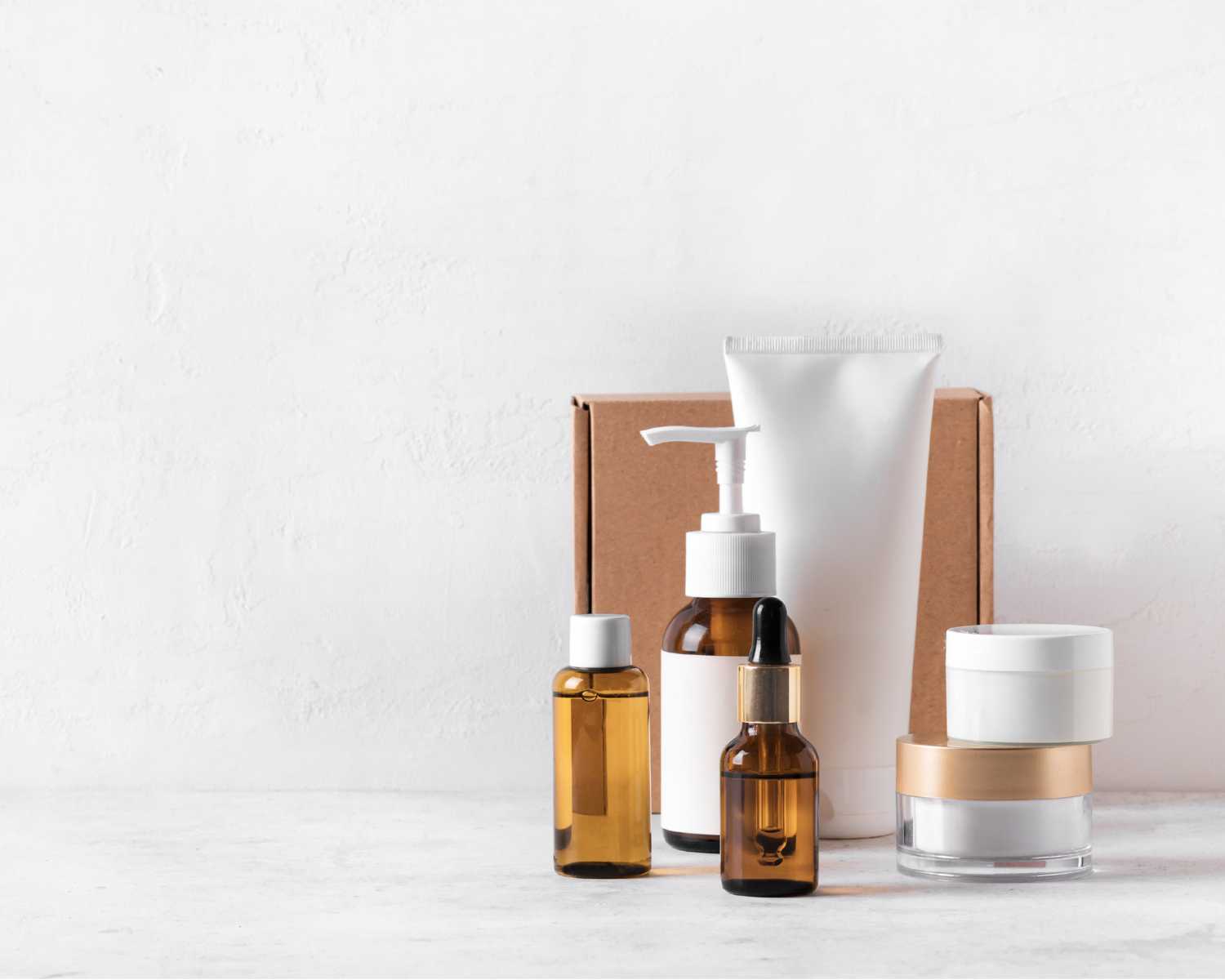
Jump right in: A Guide to Damage‑Proof Packaging for Fragile Skincare
- The Fragile Nature of Skincare Products
- Packaging Materials That Safeguard Fragile Items
- Wrapping and Internal Bracing Techniques
- Leak-Proofing Liquids and Creams
- Choosing a Sturdy Outer Box (and Sealing It Right)
- Test Your Packaging (Shake, Drop, and Learn)
- Partner with a 3PL for Packaging Peace of Mind
- Summary
Glass serum bottles. Cream jars. Toners that leak if you breathe wrong. If that box takes a hit, you’re not just dealing with broken glass, you’re cleaning up customer complaints and damage to your brand’s reputation.
Thing is, most of this mess is preventable. You don’t need tons of bubble wrap or overly complicated solutions. You need smart packaging choices, proper cushioning, and a shipping strategy that puts protection first.
We’ll walk through how to pack fragile skincare so it arrives looking polished, not broken. From material selection to bracing techniques, you’ll get practical tips that work whether you’re sending five orders a week or five hundred.
The Fragile Nature of Skincare Products
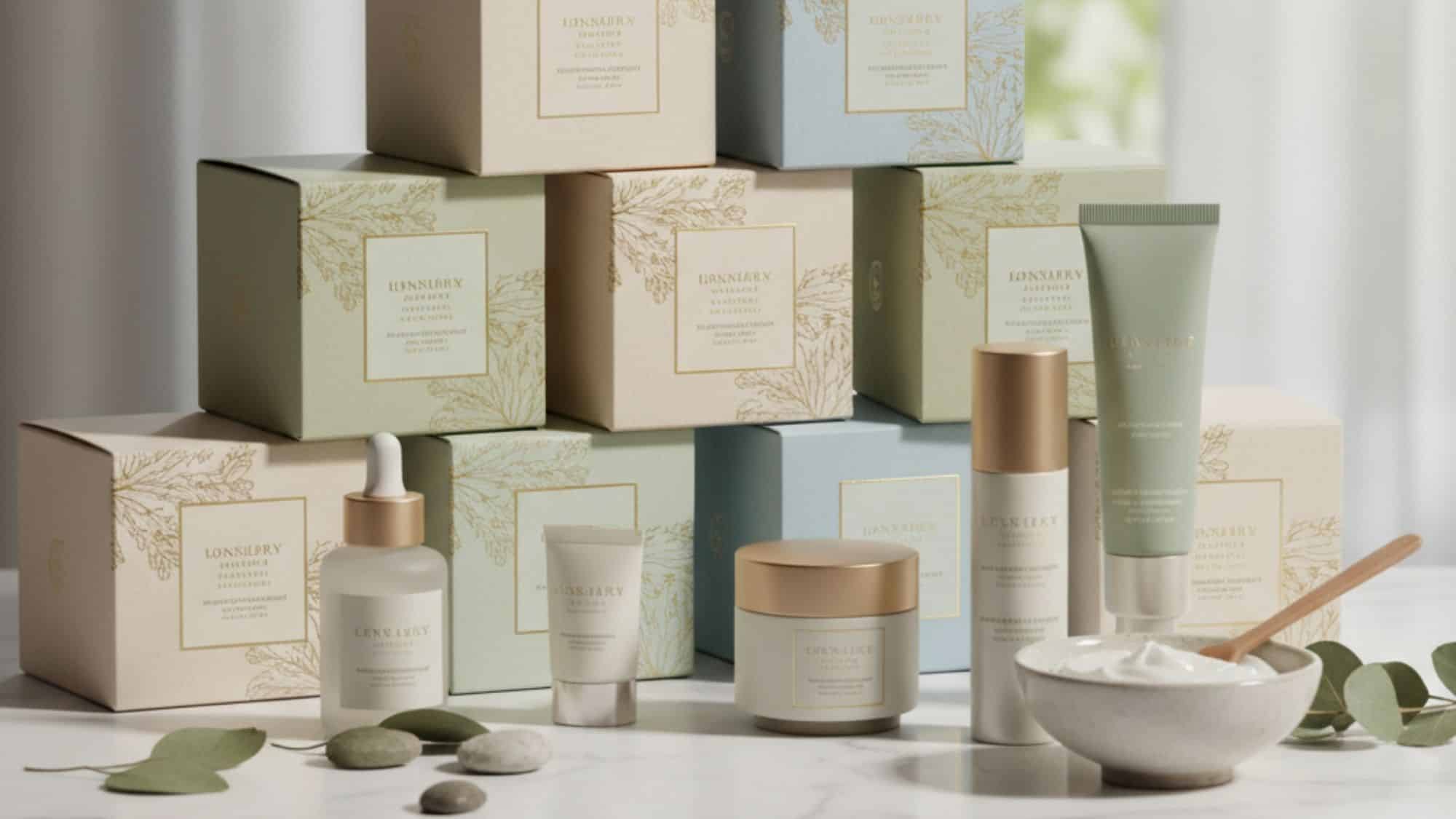
Skincare packaging looks great on a shelf, but it doesn’t always hold up in a shipping box. Glass serum bottles. Plastic jars. Thin lotion tubes. They’re fragile in different ways. Glass shatters on impact. Screw-top lids can pop loose. Soft tubes get crushed if boxed too tightly.
Even the stuff that looks sturdy isn’t always safe. Thick plastic doesn’t mean unbreakable. A jar can crack. A dropper can snap. And when one item leaks, the whole order takes a hit.
Here’s the problem: one cracked jar or soaked toner bottle doesn’t just waste product, it damages the entire experience. Customers open the box and remember the mess, not your brand. Enough bad arrivals, and returns start stacking up. Refunds follow. Reviews drop. And if you’re selling on Amazon or other marketplaces, those damage complaints? They’ll drag down your ratings fast.
You need to know exactly how your products react to pressure, drops, and vibration. That’s the starting point. From there, you can choose the right packaging to prevent the damage before it happens.
Packaging Materials That Safeguard Fragile Items
The right materials do more than cushion, they decide whether that toner bottle arrives clean or covered in goo. Skincare needs more than a basic box. You need layers of protection that stop leaks, cracks, and bruised jars before they happen.
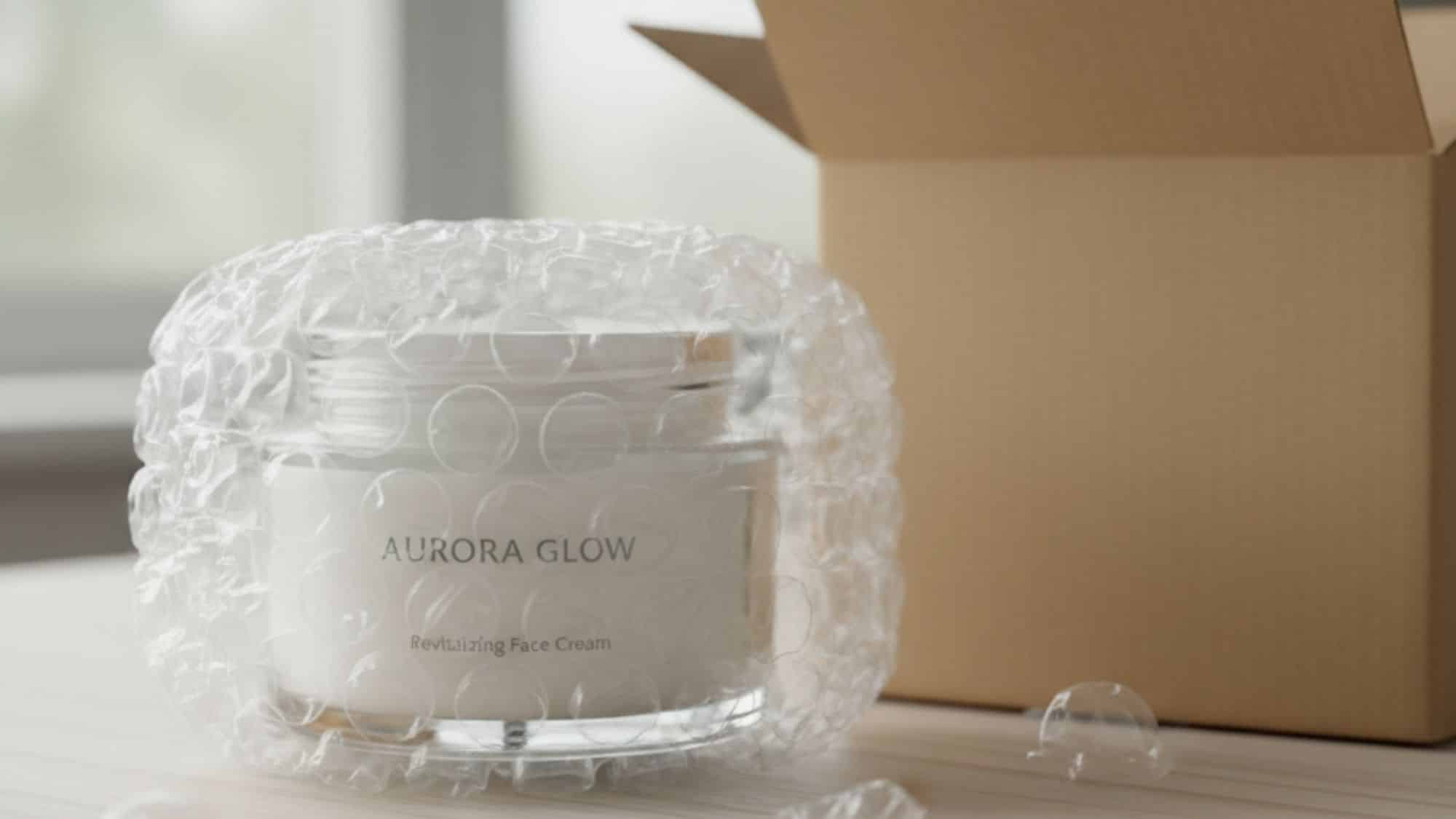
Reliable packaging materials for fragile skincare
- Bubble Wrap
- Still one of the best options out there. Wrap each item tightly so no part is exposed. Add tape to keep it secure.
Use multiple layers for glass bottles or anything heavy.
It absorbs shocks well and flexes around odd shapes like droppers or jars.
- Still one of the best options out there. Wrap each item tightly so no part is exposed. Add tape to keep it secure.
- Packing Paper or Foam Sheets
Great for wrapping before items go into the box.- Kraft paper: eco-friendly and easy to crumple around corners.
- Foam sheets: thin, stackable, and smooth.
Both help prevent scratches and protect from edge impact.
- Air Pillows
Ideal for filling space. Place them on all sides—top, bottom, and edges—so your product floats inside the box.
Use multiple pillows to surround heavier items. One or two won’t cut it. - Packing Peanuts or Shredded Paper
Fills gaps but can shift in transit. If you use them, pack tightly.
Note: Some fulfillment centers (like Amazon) discourage peanuts because they spill and jam up sorting lines.
If you go this route, look for biodegradable options—and double-check with your warehouse partner first. - Molded Inserts (Foam or Pulp)
These are the VIP section of packaging.- Custom-cut trays cradle each item—think skincare kits or glass serum sets.
- Prevents all movement and looks high-end.
- Yes, they cost more, but they seriously cut down on damage.
Quick tips to get it right
- Don’t leave empty space. That’s how products slide and break.
- Don’t over-pack either. Squeezing things in too tight can crack jars or pop lids.
- Combo strategy works best: wrap the item (bubble, paper, or foam), then fill space (pillows or paper) so nothing moves.
When in doubt, give the packed box a light shake. If you hear anything shift, open it up and try again.
Save Time and Let us Handle Your Skincare Fulfillment!
See How Using a 3PL for Your Subscription Box fulfillement needs could simplify your business. Get a Free Quote from eFulfillment Service Today!
Wrapping and Internal Bracing Techniques
Wrapping is step one. Bracing is what keeps everything from crashing into each other during the ride. The goal? Zero movement inside the box. Let’s walk through how to lock things in place.
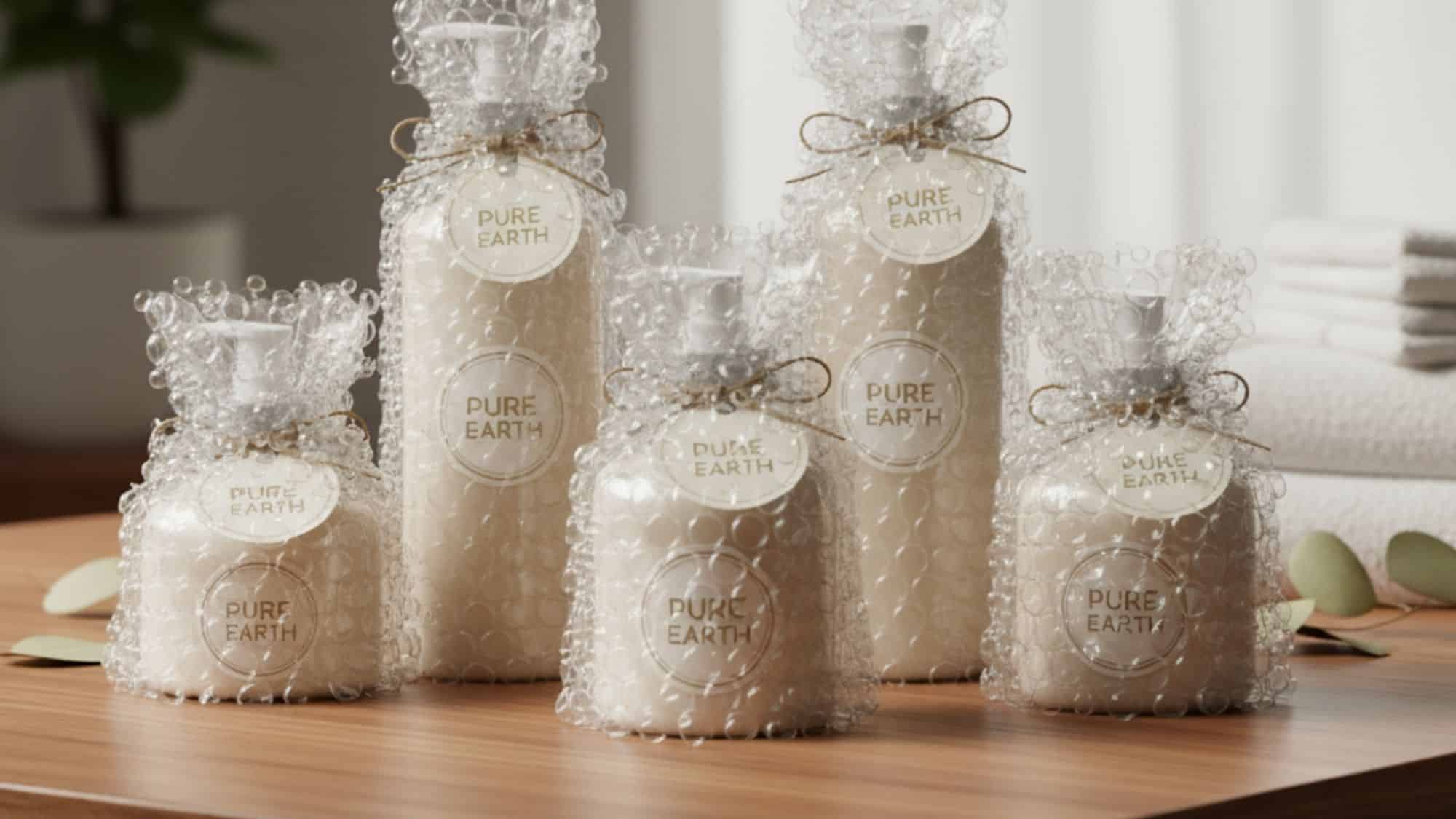
1. Wrap each item on its own
Don’t bundle things together. Wrap every jar, bottle, or tube individually.
- Use bubble wrap or foam sheets
- Cover all sides—top, bottom, and around
- Tape the wrap closed so it doesn’t come undone mid-shipment
Shipping glass? Step it up. Put the wrapped item inside a small, snug cardboard box (also called an overbox) before placing it in the main package. It adds another layer of protection for anything delicate or heavy.
2. Use dividers to separate items
When sending multiple products, like a full skincare kit, dividers are your friend.
- Cardboard partitions create individual compartments
- No contact means no impact
- Works especially well for sets of glass bottles or jars
Need inspiration? Think of how wine bottles ship. Each bottle gets its own slot so they don’t clang around.
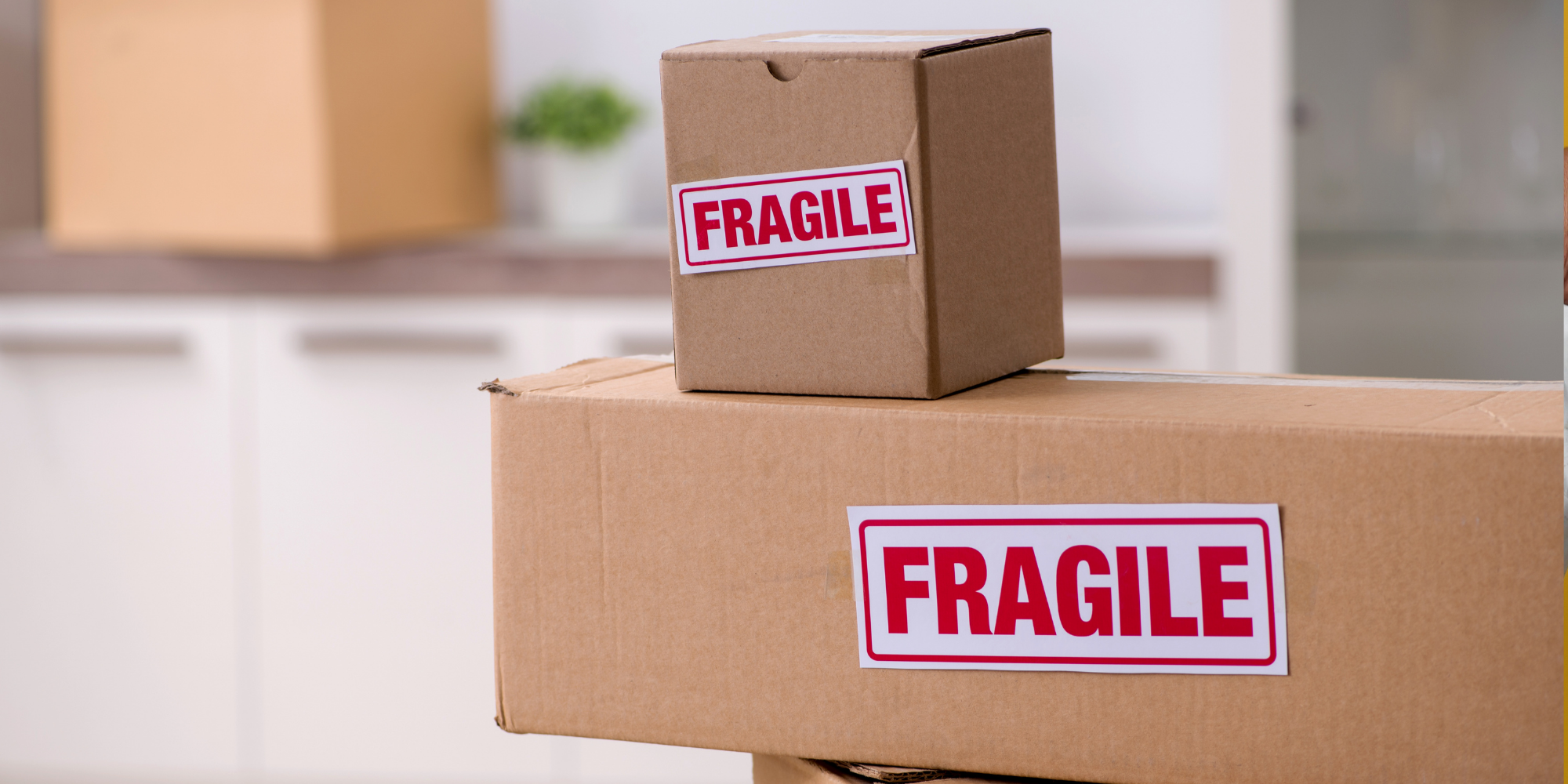
3. Layer it up
Structure matters. Here’s a simple packing order:
- Cushioning goes on the bottom first
- Heaviest item goes in next
- Add padding, then layer the next item
- Always pad between items and around the sides
Leave at least two inches of space between products and the outer box walls. Corners take a beating in transit, so reinforce them if needed—extra wrap or cardboard protectors help here.
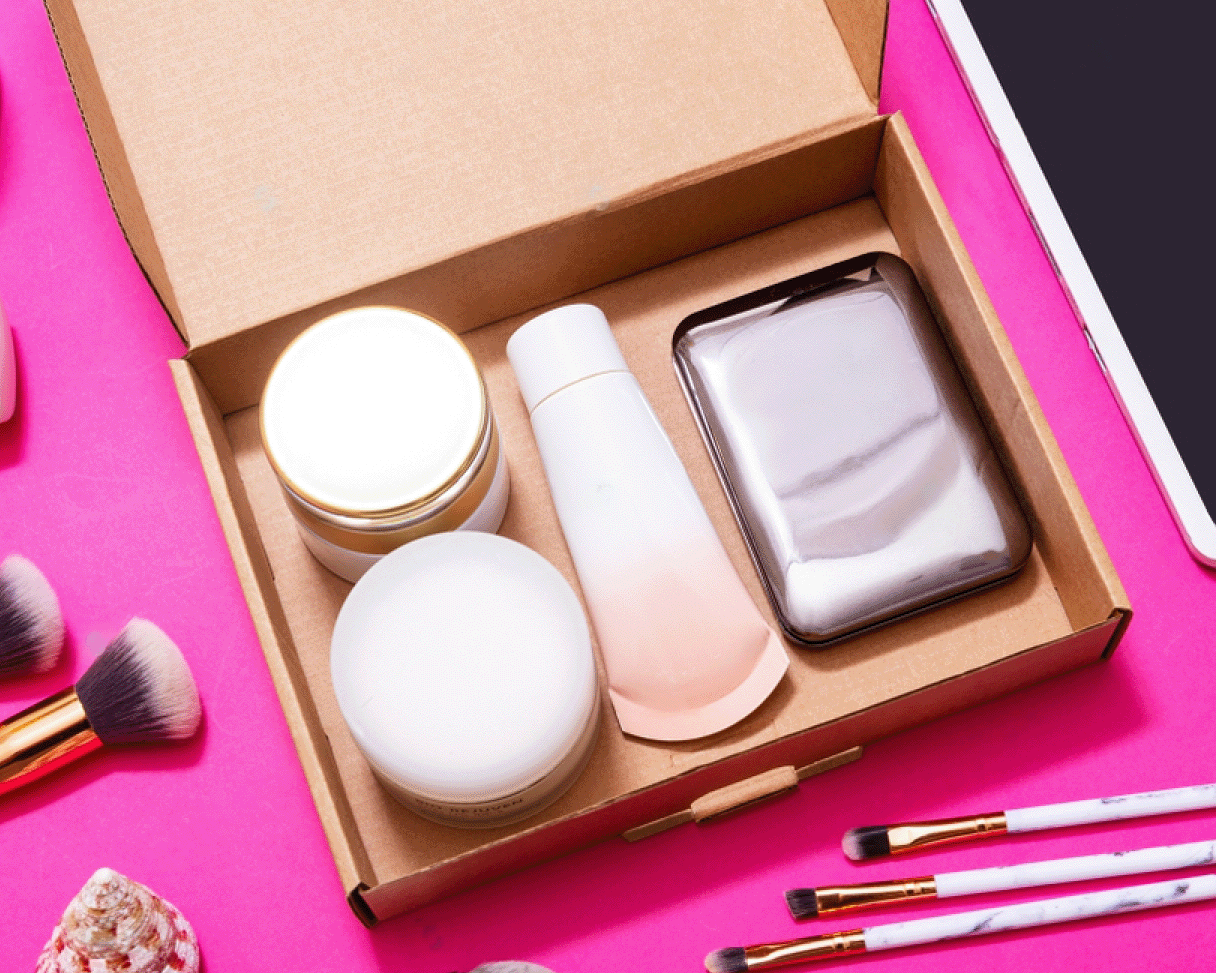
4. Fill every gap
Once everything’s in the box, give it a shake. Hear movement? Not good.
- Use crumpled paper, air pillows, or foam peanuts
- Fill every bit of space between products and walls
- Top padding should be thick enough that you need to press the flaps down to seal the box
No shifting = no breakage.
5. Don’t overdo it
Stuffing the box to the brim can backfire. If it’s bulging, it’s at risk of popping open or cracking the contents.
- Leave a bit of room for the padding to compress naturally
- For heavy items like large glass jars, consider double-boxing
- Keep the weight balanced—if one side is heavier, it’ll hit the ground first
Leak-Proofing Liquids and Creams
Breakage gets a lot of attention—but leaks? Just as destructive. One loose lid can soak an entire shipment. Worst case, it ruins not just your product but everything else in the box.
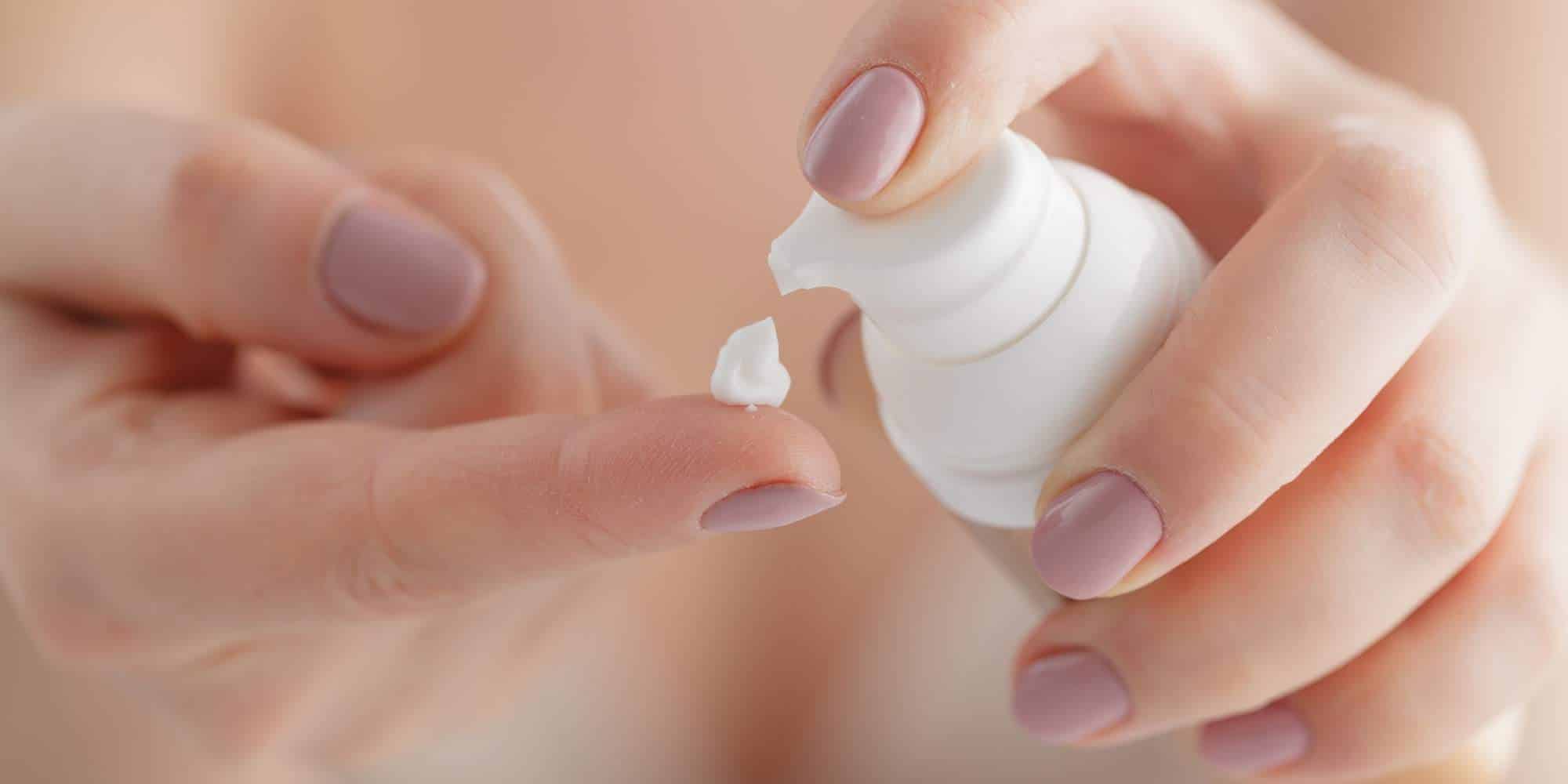
1. Tighten every lid—and seal it twice
Don’t assume caps are tight. In the rush of fulfillment, even a quarter-turn loose can lead to disaster.
- Manually check that each lid is fully secured
- Add a second layer of protection:
- Shrink bands
- Tamper-evident stickers
- Foil inner seals
These not only stop leaks but also build customer trust that the product arrived unopened.
2. Always bag your liquids
Every liquid item should go into a sealed poly bag—no exceptions.
- Use zip-top or heat-sealed plastic bags
- Add a folded paper towel or absorbent pad inside (in case of minor leaks)
- Push out extra air before sealing
If the bottle cracks or leaks, the mess stays contained. USPS recommends this. So do most fulfillment centers. Even if it’s not required, it’s smart.
Bag, then wrap
Once your liquid is bagged, wrap it in bubble wrap. This double-layer combo (bag + wrap) gives you cushion and containment.
- For fragile liquids over 4 oz, Amazon expects poly bagging, bubble wrap, and boxing
- You might not need all three for every order—but it sets a good standard
Think about how far your package travels. Over-protect now, avoid refunds later.
3. Watch for heat and pressure changes
Air travel or summer shipping can change everything. Liquids expand under heat or pressure.
- Don’t overfill bottles—leave a little headroom
- Use tough, pressure-resistant packaging
- Consider induction seals if you manufacture your own products (those airtight foil lids)
A bit of planning here avoids bloated bottles and blown-out caps.
4. Don’t ignore creams and powders
They may not spill, but they can still create a mess.
- Use jars with tight lids
- Add an inner disc lid or seal tape for insurance
- Insert a thin foam liner inside compacts to prevent powder from cracking
- Line jars of soft creams with food-safe film if needed
Even solid products need protection from pressure and bouncing.
5. Bottom line? Plan for the worst-case scenario
Assume something might leak and make sure it can’t ruin everything else.
- Seal it
- Bag it
- Wrap it
- Cushion it
These extra steps take minutes. But they save your brand from customer complaints, messy returns, and shipping disasters.
Want Someone Else to Handle the Bundling and Shipping?
Get a Free Quote from eFulfillment Service and see how we can simplify your beauty subscription!
Choosing a Sturdy Outer Box (and Sealing It Right)
You can wrap and pad all you want, but if the outer box fails? Everything inside is at risk. The box you choose (and how you seal it) is the final barrier between your skincare products and a shipping disaster.
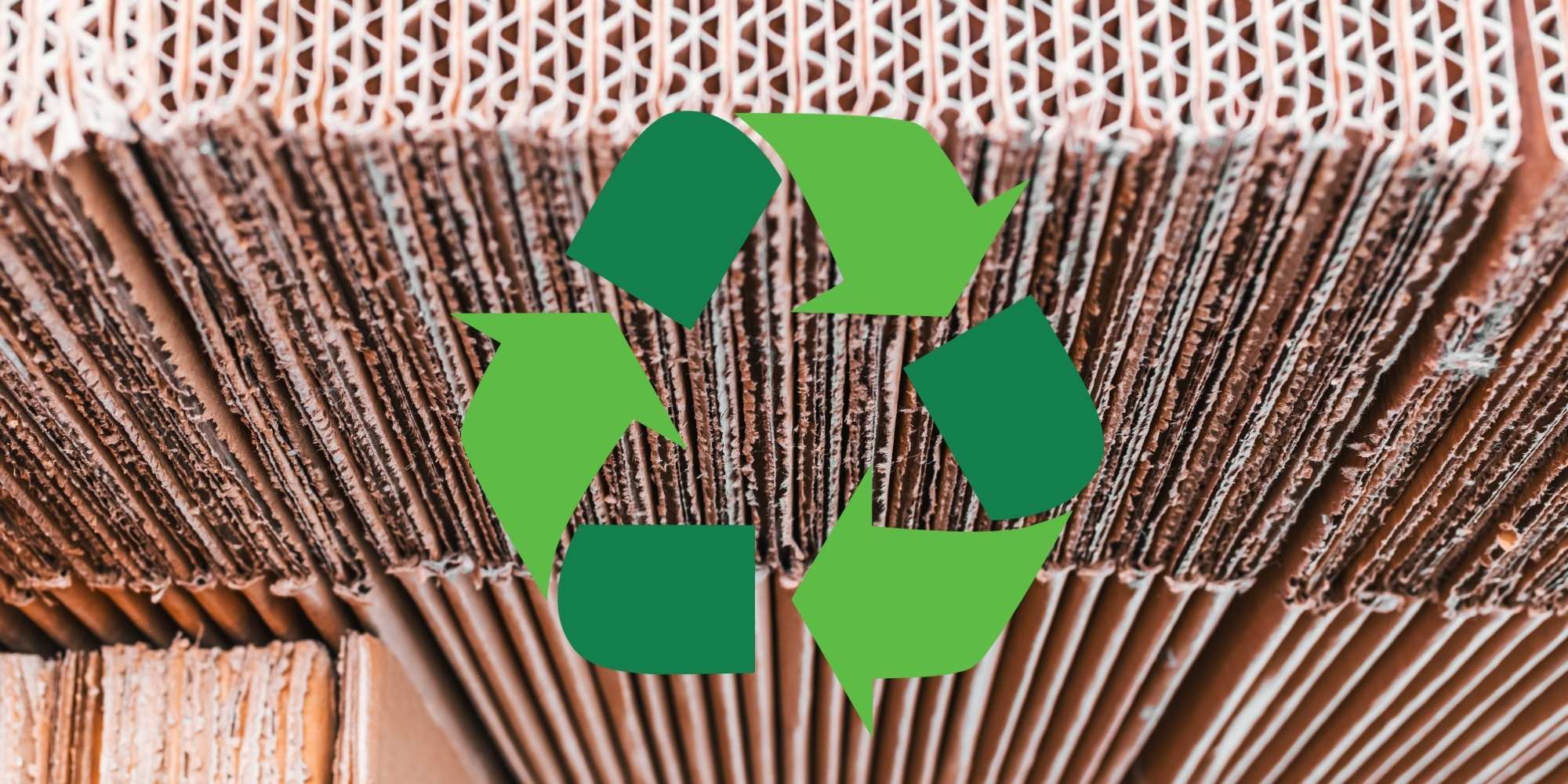
1. Use strong corrugated boxes
Skip the flimsy paperboard or envelopes. Go with sturdy corrugated cardboard.
- For heavy or glass items, use double-walled corrugated
- Make sure the box is clean, solid, and damage-free
- It should survive a 3-foot drop without anything breaking
When in doubt, size up slightly and add more padding. A tight box with too little cushion? That’s asking for trouble.
2. Pick the right size
Size isn’t just about dimensions—it’s about balance.
- Too big: products shift, padding fails
- Too small: not enough room for cushion
Aim for about 2 inches of padding around each item.
Shipping a single serum? A 6x6x6 box might be perfect.
Shipping a whole kit? You’ll need something larger with space for dividers.
Also, avoid putting very heavy items in huge boxes. They can burst through the sides. Go snug and stable.
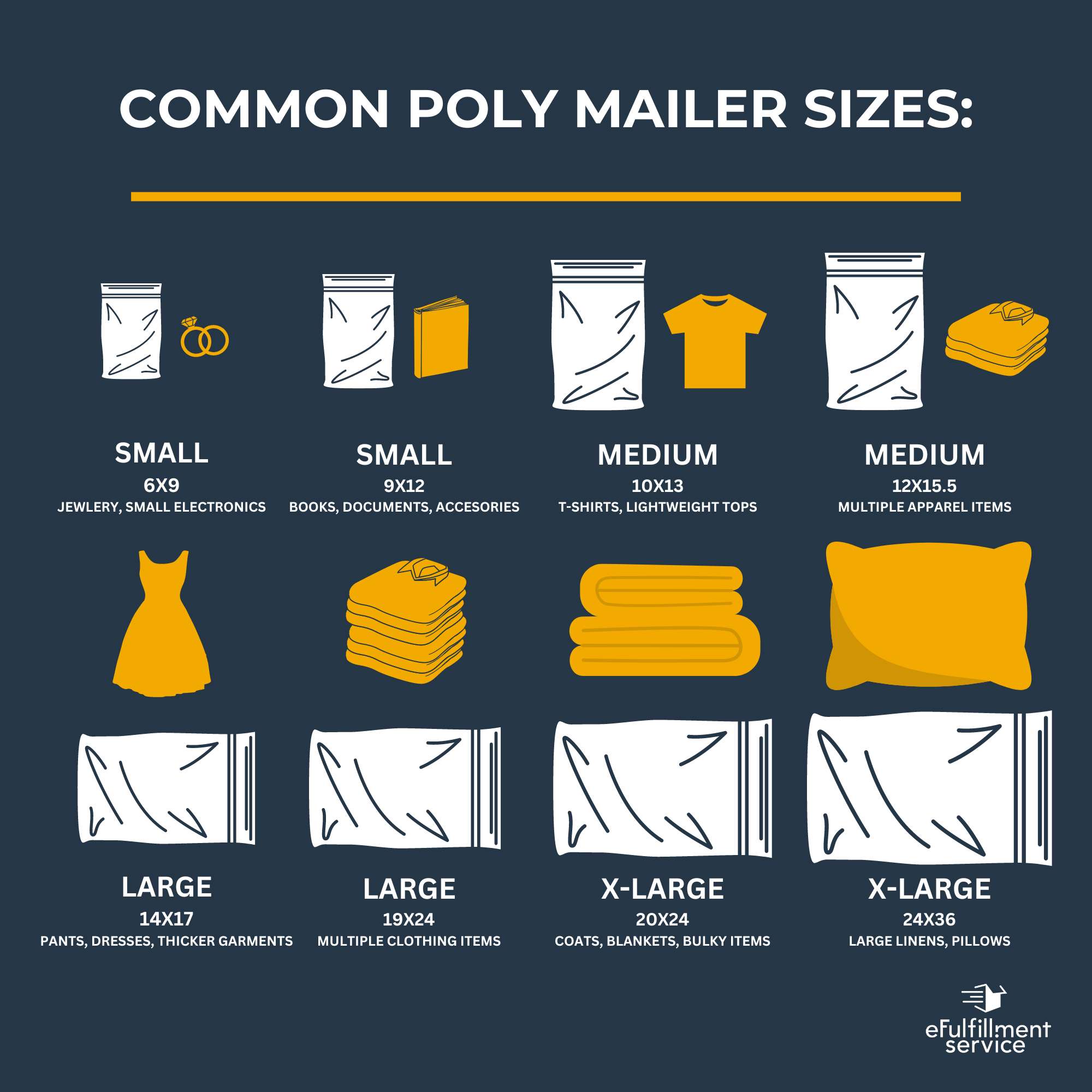
3. Use padded mailers, but only when it’s safe
Lightweight, durable items (like plastic tubes or compacts)?
A padded mailer could work.
- For glass or anything breakable, don’t risk it
- If you must use a mailer, wrap the item tightly and add foam
When in doubt, use a box. It’s not worth the gamble.
4. Seal like you mean it
Use the H-taping method for a secure seal:
- Tape down the center seam
- Tape along both edge seams
- Do this on both top and bottom
Use 2-3 inch shipping tape—either pressure-sensitive or water-activated for heavy boxes.
Avoid scotch or masking tape. They fail under stress.
Pro tip: For heavy items, reinforce the bottom with extra tape or use strapping tape.
Rethink Your Beauty Brands Strategy!
See How Using a 3PL to start a subscription box could skyrocket your business. Get a Free Quote from eFulfillment Service Today!

5. Add handling labels
A “Fragile” or “This Side Up” label won’t guarantee gentleness, but it helps.
- Use if you’re shipping liquids or glass
- Include instructions like “Do Not Freeze” if needed
- For USPS, labeling liquids may be required
Just remember, labels are a reminder not a replacement for solid packaging.
Strong boxes. Proper sizing. Clean seals. Smart labeling.
It’s the last thing you do before sending your skincare off, but it’s the part that can make or break the unboxing experience.
Test Your Packaging (Shake, Drop, and Learn)
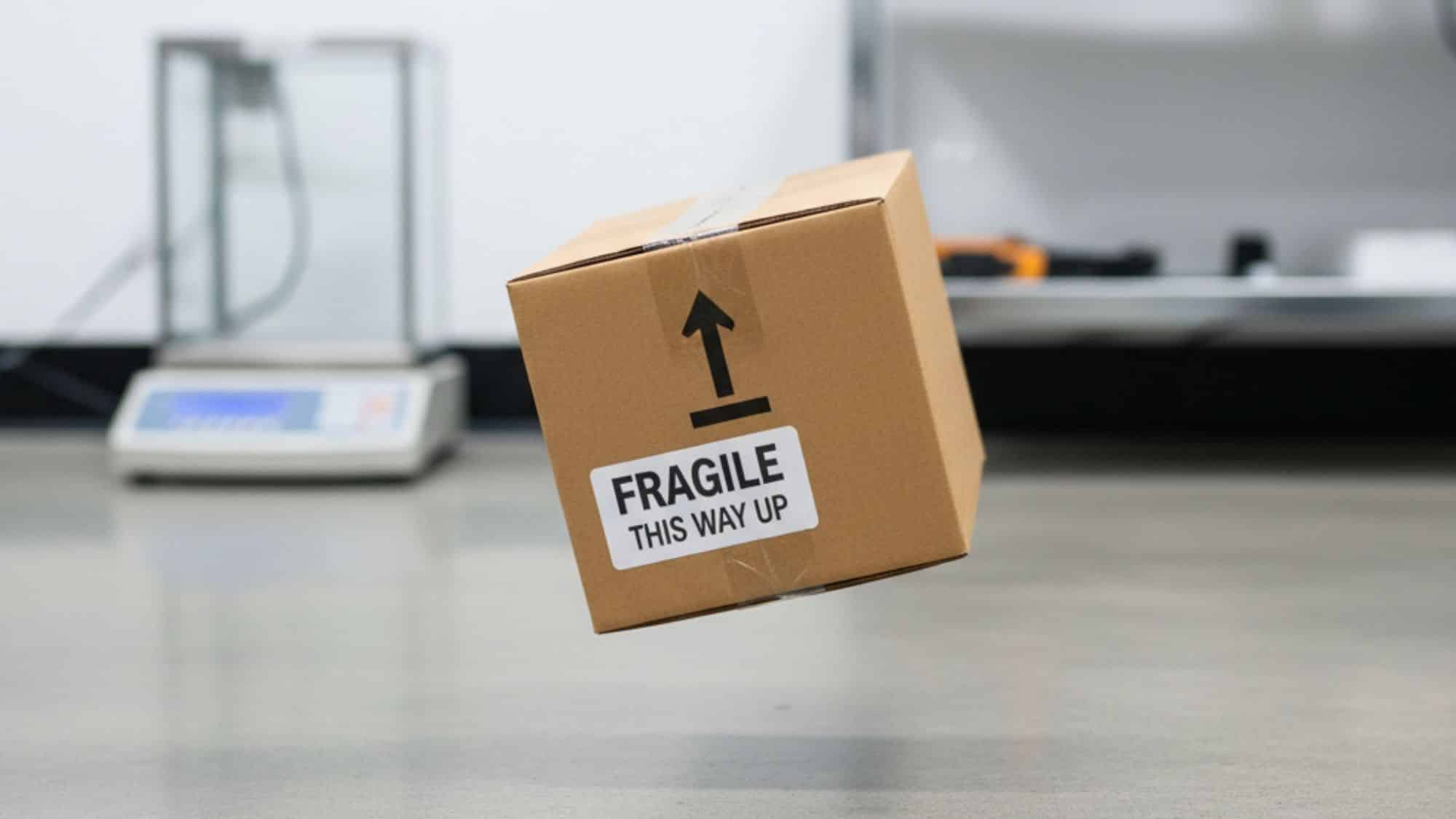
Don’t wait until customer #47 leaves a bad review to find out your packaging doesn’t work. Test it before you scale.
Shake Test
Pack your product. Then shake the box like a fulfillment center worker who’s running late.
- Hear anything shift? Add more filler.
- Feel any movement? Rewrap tighter.
This simulates bumps in vans, conveyor belts, and handoffs. If it rattles in your office, it’ll definitely rattle in transit.
Drop Test
Use Amazon’s go-to method:
- Drop the sealed box from 3 feet
- Once on each side: bottom, top, left, right, and corner
- Open it up and inspect
If anything broke, leaked, or even shifted too much—rethink your setup. Add bottom padding. Use stronger bracing. Change your wrap technique. This test hurts a little, but not as much as refunding damaged orders.
Refine and repeat
Once you’ve got it dialed in, write it down.
- Snap a photo of the final pack job
- Create a checklist or SOP for your team
- Include materials, number of wraps, and taping style
This is especially important if you work with a fulfillment partner or plan to scale. Keep testing when new products or materials are introduced. What worked for a 4 oz glass jar might not hold up for a 10 oz aluminum tin.
Want to Skyrocket Your Skincare eCommerce Business?
Using a 3PL can free up your time so you can focus on what matters, selling great products!
Partner with a 3PL for Packaging Peace of Mind
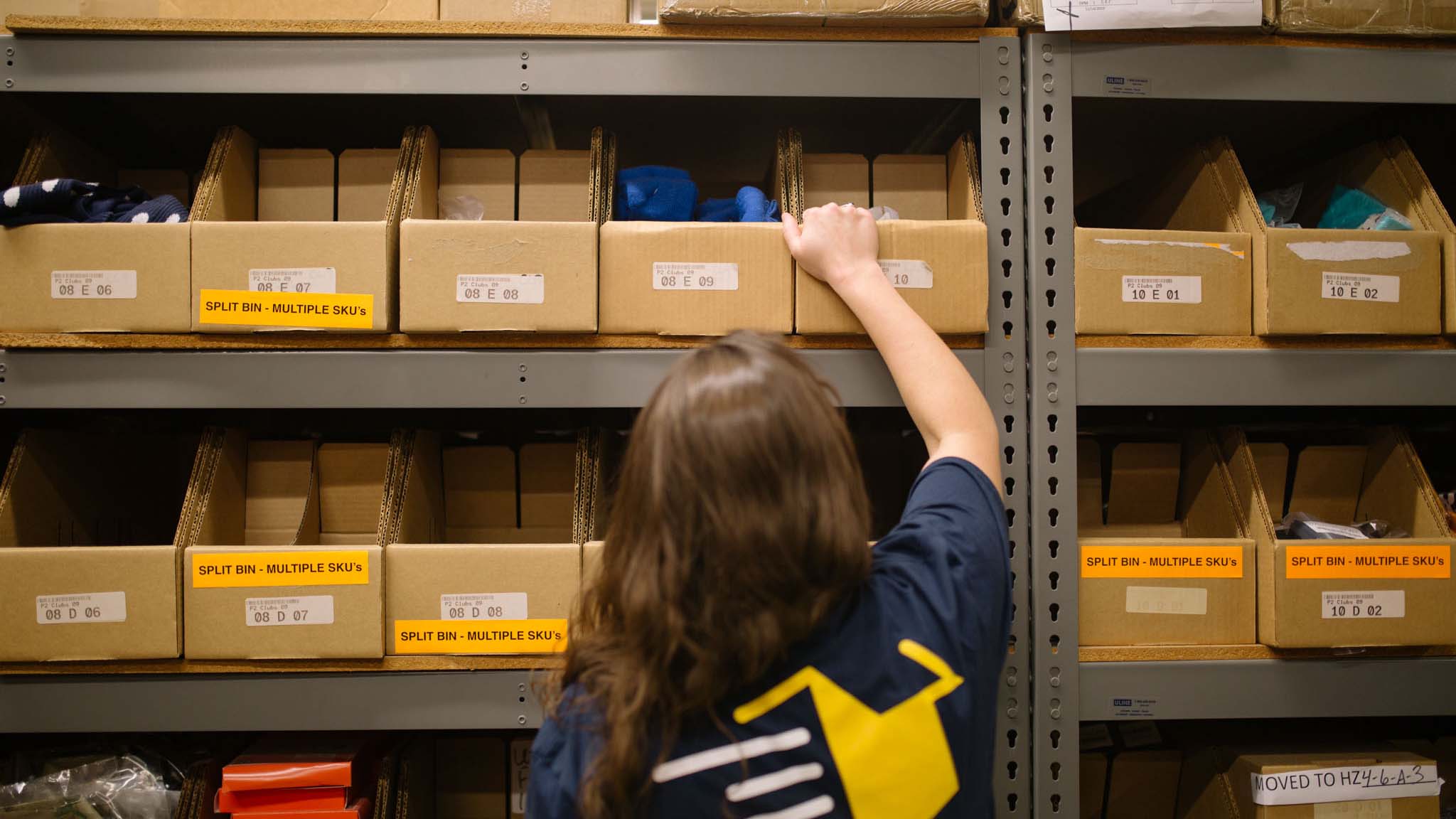
Trying to hand-pack every order at scale? That’s not sustainable for you. A 3PL like eFulfillment Service takes that pressure off your plate.
Here’s what a good 3PL brings to the table:
- Expert handling
Teams trained to pack fragile skincare with the right materials and labels. eFS uses bubble wrap, air pillows, and sturdy boxes as a standard.
- Custom kitting
Selling sets or subscription boxes? They’ll assemble and pack it all, keeping everything snug and presentable.
- Material sourcing
No more last-minute dashes to buy bubble wrap. They’ve got it stocked—and in bulk.
- Testing & compliance
From USPS liquid guidelines to Amazon prep rules, they know what’s required. Some even run drop tests for you. - More time for you
You focus on launching that new facial oil or rebranding your labels. They handle the packaging, shipping, and delivery.
Rethink Your Subscription Strategy!
See How Using a 3PL for Your beauty fulfillment needs could simplify your business. Get a Free Quote from eFulfillment Service Today!
Summary
Preventing breakage and spills in skincare shipping comes down to one core principle: preparation. By understanding your product’s fragility and using the right combination of protective materials, secure wrapping, internal bracing, leak safeguards, and strong outer packaging, you create a fortress around your product. From a tightly wrapped serum bottle that can survive a drop, to a cream jar sealed against leaks, every step adds up to a damage-proof package. Don’t forget to label it clearly and test your methods – a little effort upfront saves a lot of heartache (and cost) down the line.
For skincare brands and ecommerce sellers, mastering packaging is as important as crafting the product itself. A beautifully formulated facial oil means little if it arrives shattered and soaking the box. With the guidelines in this article, you can ship with confidence, knowing that your glass bottles, creams, and liquids are shielded from harm. And if you ever need a hand, partnering with experts like eFulfillment Service can ensure your fragile products are treated with the white-glove care they deserve.
Here’s to zero broken bottles, no leaky jars, and many delighted customers unboxing their pristine skincare products! With damage-proof packaging strategies in place, you can truly “stop the spills” before they start, keeping your products (and your reputation) intact, one safe shipment at a time.
Sources:
- Lindsay Rokicki – Fragile Items: A Guide for FBA Prep & Ship (eFulfillment Service Blog)efulfillmentservice.com
- eFulfillment Service – Amazon FBA Packaging Requirements: A Seller’s Guideefulfillmentservice.com
- Atomix Logistics – How to Ship Makeup Safely: Packaging Tips for Fragile Cosmeticsatomixlogistics.com
- Brown Packaging – Best Practices in Protective Packaging for Fragile Itemsbrownpackaging.com
- ReachShip – Ultimate Guide to Shipping Liquidsreachship.com
- DS Smith ePack – How to Ship Cosmetics Safelydssmithepack.co.uk
eFulfillment Service – Beauty & Cosmetic Fulfillment FAQefulfillmentservice.com



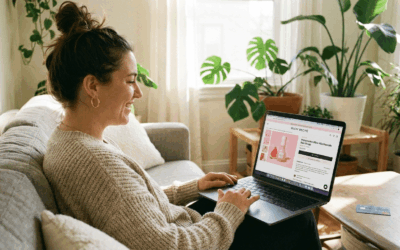
0 Comments